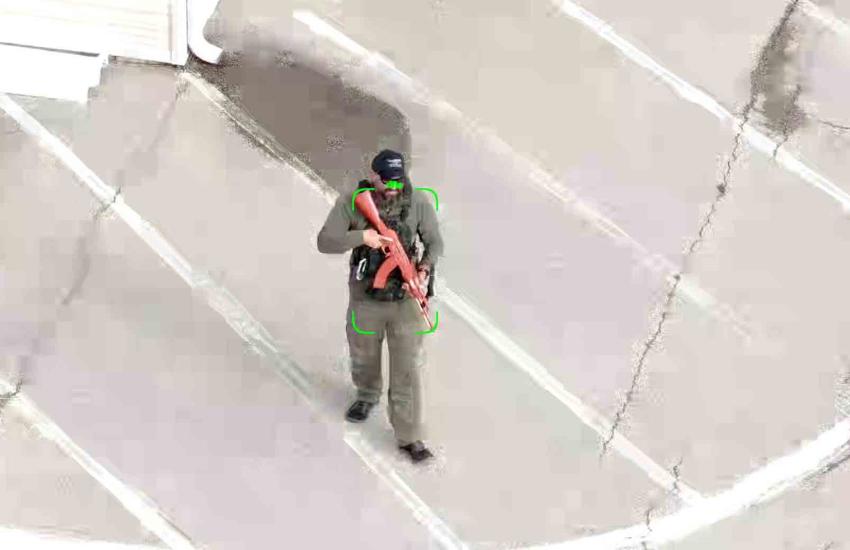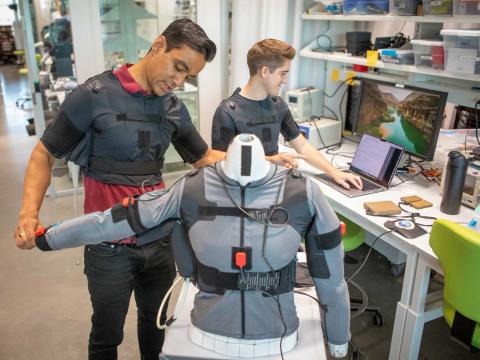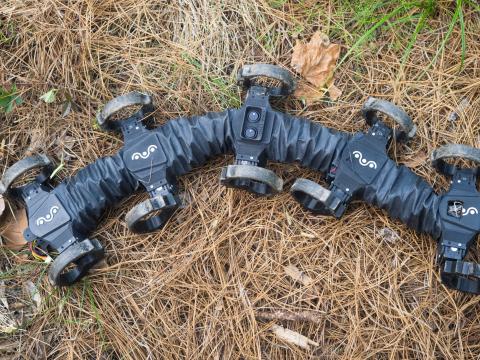Advanced AI System Shows Promise in the Field

Department of Defense (DoD) personnel are seeing major successes and benefits stemming from the novel Scylla artificial intelligence (AI) algorithm that detects distance. But since threats and risks across the globe are always rising and evolving, crews are constantly looking for ways to improve the system.
One hole that Scylla users want engineers to fill is the system’s ability to detect and recognize unmanned systems that can function in several domains, according to Elizabeth Morin, director, Nuclear Surety & Exercises, and chair, Physical Security Enterprise and Analysis Group (PSEAG), an organization responsible for testing Scylla. Team members also supervise “all of the research, development, test and evaluation (RDT&E) spending for physical security across the DoD for both nuclear and conventional programs,” Morin said in an interview with SIGNAL Media.
Scylla is intended for every domain, but it currently has trouble tracking systems that are effective in water, on land or in the air, and crews need to find a way to enable Scylla to be watchful of and hunt down these threats.
Similarly, officials are looking to help the tool become more effective at differentiating between humans and animals, especially near water.
“The challenges that we have with the existing security equipment, false alarms, for example, or like I said, at the waterfront, trying to be able to distinguish on those sensors between a human and wildlife and dealing with reflection and some of the other challenges that you face in waterfront,” Morin said. “So, we hear this from the community quite a bit, and the services come to us, and they say, ‘Hey, we have this capability gap. We’re really having a hard time. Can you help us fix this capacity gap?’”
Furthermore, users want to see that the system can predict future threats. This advancement would allow the DoD to be more prepared, ideally leading to improved physical security, the main goal of PSEAG.
“We are trying to predict future threats and saying, ‘Hey, what’s coming down the pike, and what can we do to better improve our security posture for the future?’” Morin said. “The PSEAG projects are projects that are looking to try and be ahead of the threat and not necessarily just trying to address problems that we have today.”
In addition to looking at ways to improve the system, crews are also celebrating and acknowledging the many areas Scylla has already helped advance.
Firstly, DoD officials have witnessed that Scylla is helping protect soldiers who live on military bases. Some bases are enclosed by thick forests, which allows adversaries to hide behind the dense tree cover to spy or possibly get in position to launch an attack against the base. To defend against this, the DoD wanted to develop a way to see through the foliage to detect any possible suspicious activity, which would alert the troops on base and give them additional time to prepare. Crews reportedly endured several challenges while constructing this capability, but by using and upgrading Scylla, they say that the tool has proven to help soldiers collect several crucial pieces of data in this scenario, according to Morin.
“Trying to find some sort of optical technology that can actually see through all that foliage and see what’s coming through has been really hard,” Morin said. “And that project initially was a fail, but one of the things that we were very excited about with this project is when we tested it, we were very successful in being able to identify three personnel, be able to do facial recognition on those personnel, being able to identify what kind of weapons that they were carrying, and then when they left the scope of the camera’s vision, there was a drone that was able to be deployed to then follow them where they were going.”
“So, all in all, the detection capabilities that it brings to the table are pretty impressive,” Morin added.
Next, researchers also wanted to test Scylla’s ability to identify more than just physical threats against security but behavioral threats against security. For example, crews trained the technology to predict when two people will break out into a fistfight. Scylla can analyze the behavior of two people and alert emergency response teams when a confrontation goes too far, according to Morin. More specifically, in just a matter of moments, the algorithm can comb through a database of faces depicting several different emotions, DoD officials indicate. If the faces in the video or picture illustrate anger or aggression, Scylla can alert officials of the encounter and of a possible fight.

Finally, Scylla has proven to be effective at detecting smoke and fire while also being able to locate active shooters.
Scylla, created by a company with the same name, was developed and experimented with over the past couple of years, and it was built to help military leaders identify threats to keep soldiers and citizens safe. The technology is another crucial piece in propelling the DoD’s goal of integrating more AI and large language model systems into its services to help ease operations. And more specifically, Scylla is helping PSEAG accomplish its mission of getting ahead of emerging threats while maintaining and improving physical security across all military services.
“We have been looking, for several years, to try and identify sensors that can do a broad range of detection capabilities, whether they’re trying to detect people, people in unusual circumstances, anomalous behaviors, drones, things along those lines,” Morin said. “And this has been a great merge of all the things that we’ve been looking for in terms of physical security at an installation level.”
Scylla is extraordinarily compatible with the existing surveillance system, Morin excitedly added. Crews were able to simply add Scylla to the system instead of having to tear everything down and completely renovate the program to make it Scylla-compatible. Despite this convenience, the system is still a couple of years away from full maturity and implementation across the DoD. Officials still must fulfill certain logistical requirements, and it will take time to train personnel and transition over to the new system, Morin informed.
As aforementioned, Scylla has already shown promise in the field despite it being a relatively new system, but crews know they still have work to do. To improve the tool, researchers will continue to experiment with Scylla in maritime environments, explore ways to better its ability to detect unmanned systems that are effective in several domains and investigate upgrading the system’s ability to predict future threats. Ideally, these changes will improve the system, but due to the ever-changing nature of the AI and large language model industries, leaders claim that crews will be constantly looking for ways to improve and upgrade technologies like Scylla.
“As we’re looking at how emerging technology is working, I don’t see a final solution,” Morin said. “I see this constant spiral development where the algorithms and AI and machine learning are constantly learning and being able to change and adapt to new threats.”





Comments